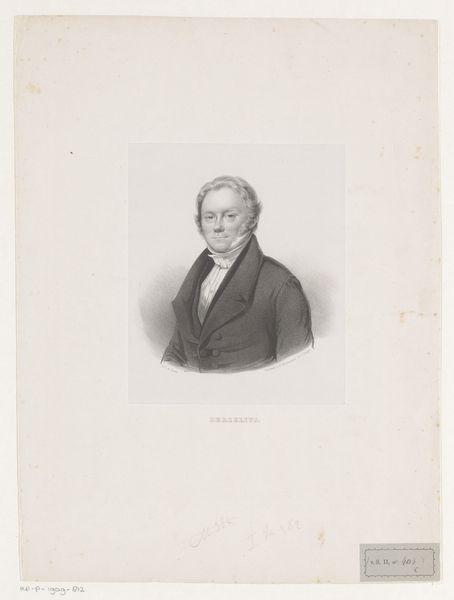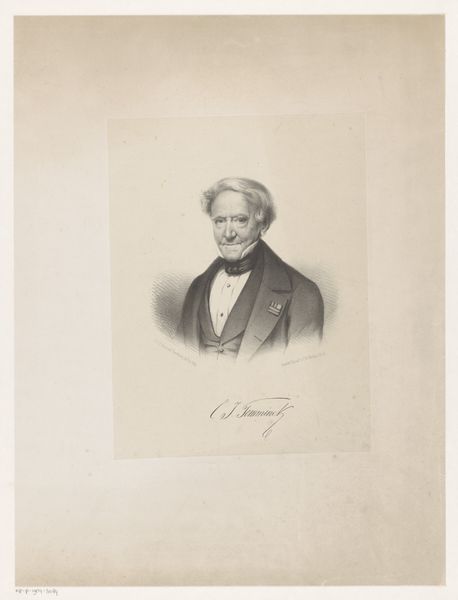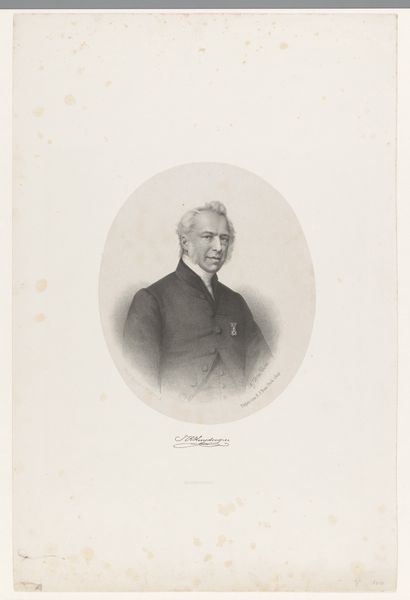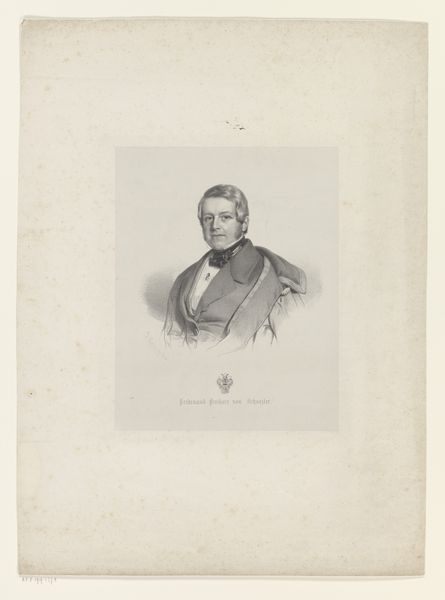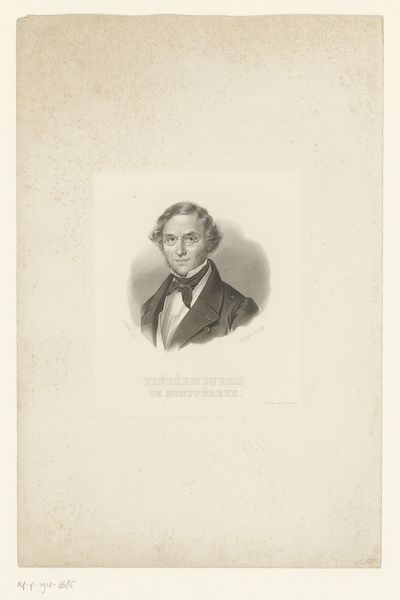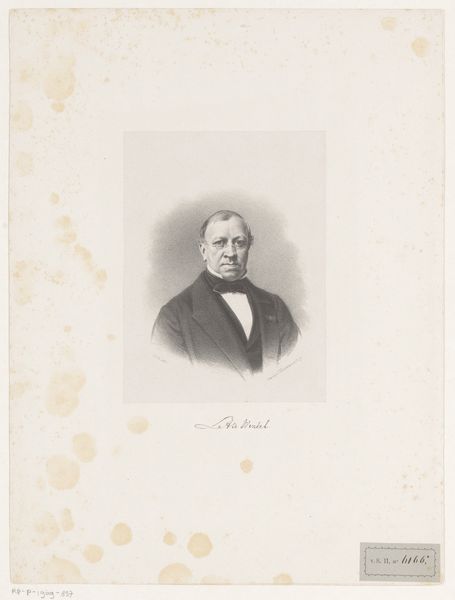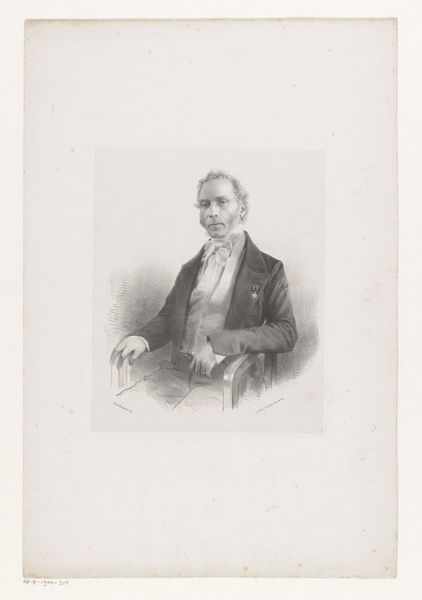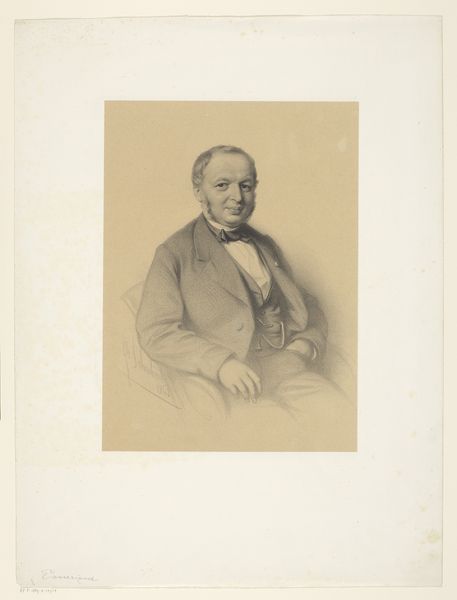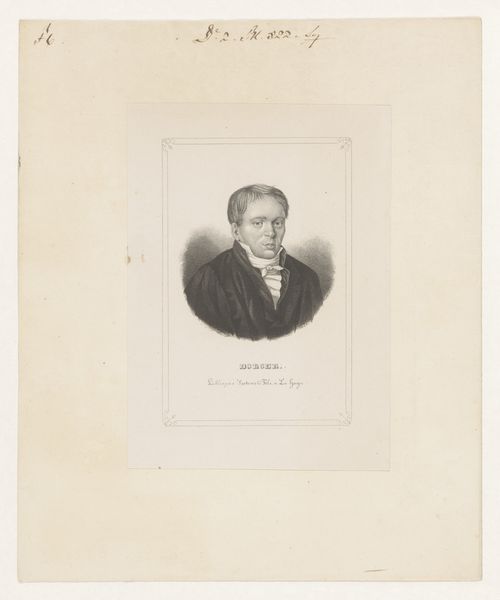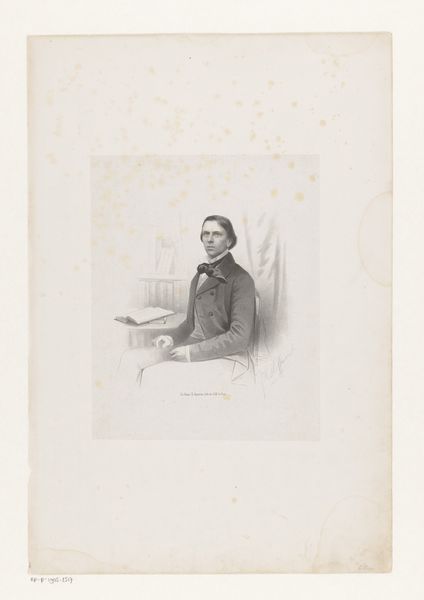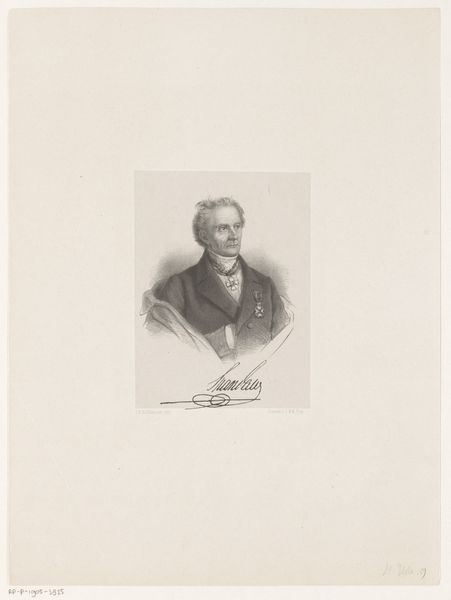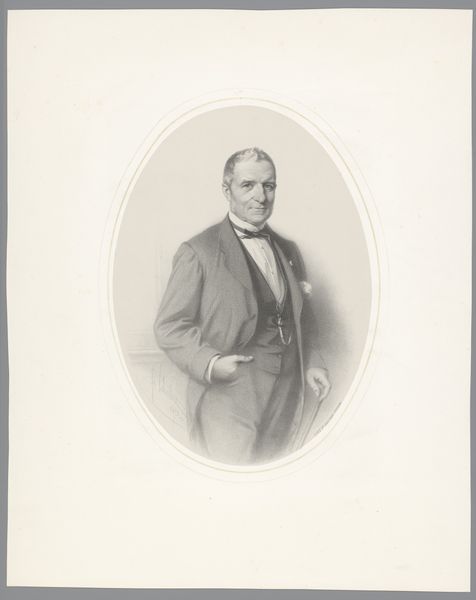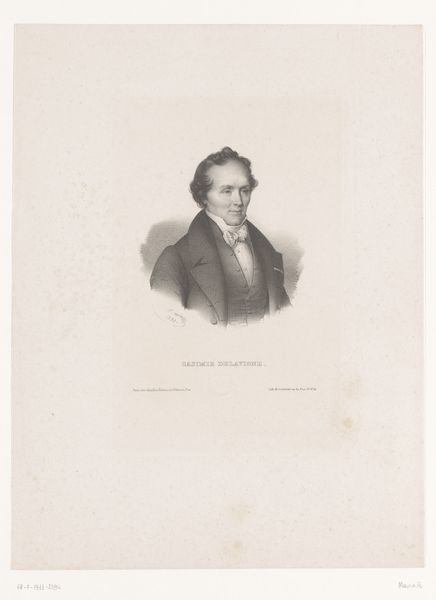
drawing, graphite
#
portrait
#
pencil drawn
#
drawing
#
pencil sketch
#
pencil drawing
#
romanticism
#
graphite
#
realism
Dimensions: height 585 mm, width 458 mm
Copyright: Rijks Museum: Open Domain
Editor: We are looking at "Portret van een onbekende man, mogelijk Michelet" a graphite drawing made sometime between 1827 and 1862, and attributed to Paul Rohrbach. It’s a rather striking image with beautiful tonality and rendering, but feels a bit formal, rigid even. How would you interpret the visual elements of this portrait? Curator: Focusing on its intrinsic qualities, observe how the artist uses graphite to create a range of tonal values. Notice how these tones model the figure’s face and clothing, and create the overall structure. Consider the use of line – its direction and thickness, to outline shapes. This formal treatment and rendering of shadows describes the textures present. Do you see how the interplay between these formal components structures meaning? Editor: I do see how the artist builds structure with line, shape, and tone. Can you elaborate on what meanings are produced, and where the viewer might locate them? Curator: One may perceive a contrast between the softness of the face, rendered with delicate gradations of tone, and the more rigidly defined lines of the jacket. Note the contrasting directions in the marks used to describe hair. These formal decisions may create dynamism by establishing varying depths across the drawing’s surface. We could even explore how this relates to the Romantic period, which this work represents. Do you observe how these tensions might communicate broader social dynamics of the period? Editor: That’s a great perspective. I hadn't considered the interplay between the formal elements of portraiture and broader questions of period social life and historical context. Curator: Indeed. Close looking reveals intricate compositional structures which relate to more abstract thematic concerns, a dialectic of visual and historical languages, shall we say. Editor: It’s fascinating to consider how artistic choices around something as simple as graphite lines contribute so richly to our understanding and reception.
Comments
No comments
Be the first to comment and join the conversation on the ultimate creative platform.
